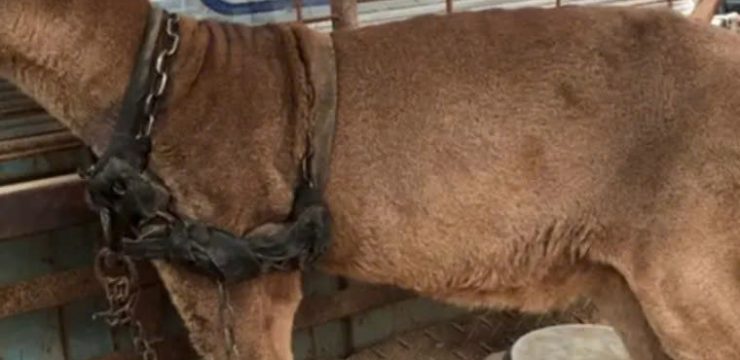Throughout history, human innovation has led to remarkable solutions for overcoming natural obstacles. One of the most fascinating examples of ingenuity is the method used to construct roads in mountainous regions before modern engineering tools were available. Faced with steep, treacherous slopes that made travel dangerous, early builders developed a practical solution: they used donkeys to find the safest, most navigable paths. This method, though simple, was highly effective in ensuring the safety and stability of roads, demonstrating how humans have long adapted to their environment using available resources.

The Challenges of Mountainous Terrain
Constructing roads in mountainous regions has always been a daunting challenge. Steep inclines, rocky surfaces, and unstable ground made it difficult for travelers to pass safely. Before modern technology, engineers and builders had to rely on practical observation and natural instincts rather than advanced tools and machinery.
One of the greatest risks in road construction was ensuring stability. If a path was too steep or unstable, travelers risked injury or even death, especially when transporting heavy goods. This was particularly concerning for those who relied on pack animals to carry supplies across treacherous landscapes. Early builders recognized that finding a safe and accessible route was the key to successful road construction, and they turned to an unlikely but highly effective guide: the donkey.
How Donkeys Became Essential to Road Planning
Donkeys have long been known for their ability to navigate rough terrain. Unlike humans, who might attempt to take a direct but dangerous path, donkeys instinctively seek out stable footing and gradual inclines. Their natural ability to sense unstable ground made them ideal for identifying the safest possible routes in mountainous areas.
Early builders would bring a donkey to a potential construction site and allow it to roam freely. The animal’s instincts would lead it along a path that avoided steep cliffs, loose rocks, and other hazards. By carefully observing the route chosen by the donkey, builders could determine the best location for a road, ensuring that it followed a natural, stable incline rather than forcing an artificial path through dangerous terrain.
This method was not just about convenience—it was about safety. Roads created using this technique were more durable and secure, reducing the risk of landslides and making travel significantly safer for both people and animals.
Transforming a Donkey’s Trail Into a Road
Once the ideal path was identified, workers began transforming the donkey’s trail into a functional road. This process required clearing obstacles, reinforcing weak areas with stones, and leveling the ground where necessary. Because the chosen path already provided natural stability, fewer modifications were needed, making construction both efficient and practical.
Over time, these donkey-guided routes evolved into well-traveled roads, serving as essential trade and travel pathways. These roads allowed for the safe transport of goods and people, connecting isolated mountain communities with larger cities and trade hubs. The technique ensured that roads were built with the landscape rather than against it, making them more sustainable and resistant to erosion.
A Testament to Human Ingenuity
This practice is a powerful example of how early civilizations solved complex problems using ingenuity and resourcefulness. Without the advanced surveying tools available today, they relied on the instincts of animals that had adapted to the environment over centuries.
Beyond its practicality, this method highlights an important principle in road safety and construction—the idea that working with nature is often more effective than trying to conquer it. Rather than forcing roads through unstable terrain, builders trusted the wisdom of natural movement, leading to safer and more enduring pathways.
Moreover, using donkeys to guide road construction wasn’t just a clever trick; it was a reflection of the deep relationship between humans and animals. Donkeys were not only used for labor but also as essential partners in exploration and development.
The Evolution of Road Construction
Today, modern engineering has largely replaced traditional methods of road construction. With GPS mapping, aerial surveys, and heavy machinery, roads can now be built with precision, regardless of terrain. Modern roads are straighter, more durable, and designed for high-speed travel and heavy loads.
However, the underlying principle remains the same: safe roads must follow the most stable and efficient routes. Even with advanced technology, engineers still consider natural topography when planning roads, echoing the same approach used by early builders and their donkey guides.
This historical method serves as a reminder that practicality and observation are just as valuable as advanced tools. While we no longer use donkeys to scout mountain paths, the idea of learning from nature remains deeply relevant in modern infrastructure planning.
Lessons from the Past
The practice of using donkeys to map safe roads offers valuable lessons about adaptability, patience, and problem-solving. It reminds us that even without modern technology, human ingenuity can overcome formidable challenges by working with the environment rather than against it.
This story also teaches us that sometimes, the simplest solutions are the most effective. Rather than trying to impose a rigid design onto unpredictable terrain, early builders trusted a method that had been perfected by nature itself.
A Lasting Legacy of Practicality and Innovation
While donkeys are no longer used in road construction, their role in shaping transportation history remains a testament to human innovation and practicality. These early roads laid the foundation for many of the routes that evolved into modern highways, proving that even the most basic techniques can have a lasting impact.
The legacy of donkey-guided road-building is one of creativity, respect for nature, and strategic problem-solving. It’s a perfect example of how collaborating with the environment—rather than attempting to dominate it—can lead to long-term success.
Final Thoughts
Although modern engineering has advanced far beyond the methods of the past, the ingenuity behind donkey-guided road construction still holds valuable lessons today. Safe, efficient roads require careful planning and a deep understanding of the terrain, just as they did centuries ago.
This historical approach reminds us that sometimes, looking to the past can provide solutions for the future. As we continue to innovate, respecting and learning from natural systems will remain a fundamental part of successful design and construction.
Next time you drive up a winding mountain road, take a moment to appreciate the centuries of wisdom behind its construction. And remember—long before engineers and machines shaped the landscape, a simple donkey may have helped pave the way.





